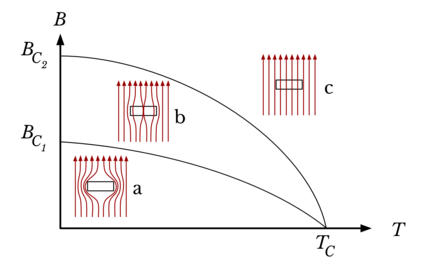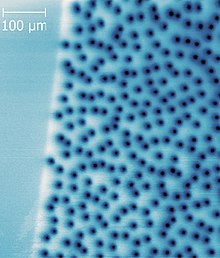

In superconductivity, a type-II superconductor is a superconductor that exhibits an intermediate phase of mixed ordinary and superconducting properties at intermediate temperature and fields above the superconducting phases. It also features the formation of magnetic field vortices with an applied external magnetic field. This occurs above a certain critical field strength Hc1. The vortex density increases with increasing field strength. At a higher critical field Hc2, superconductivity is destroyed. Type-II superconductors do not exhibit a complete Meissner effect.[2]
- ^ Wells, Frederick S.; Pan, Alexey V.; Wang, X. Renshaw; Fedoseev, Sergey A.; Hilgenkamp, Hans (2015). "Analysis of low-field isotropic vortex glass containing vortex groups in YBa2Cu3O7−x thin films visualized by scanning SQUID microscopy". Scientific Reports. 5: 8677. arXiv:1807.06746. Bibcode:2015NatSR...5.8677W. doi:10.1038/srep08677. PMC 4345321. PMID 25728772.
- ^ Tinkham, M. (1996). Introduction to Superconductivity, Second Edition. New York, NY: McGraw-Hill. ISBN 0486435032.